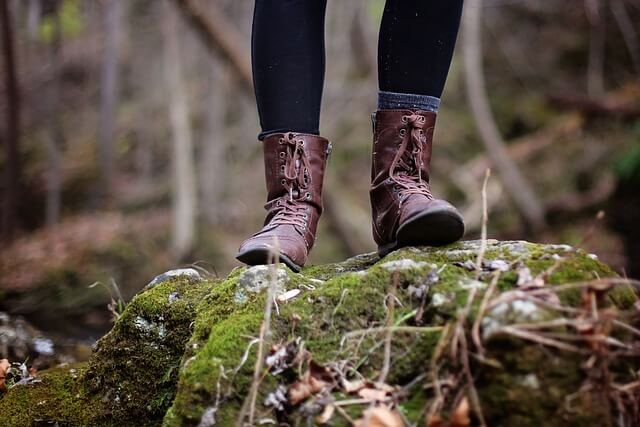Hiking Tools

Introduction to Hiking Tools
Hiking requires specific tools to ensure safety, comfort, and readiness for outdoor challenges. Whether you’re going on a short trail or a multi-day trek, the right gear makes all the difference.
- Hiking Boots: Durable, waterproof boots with ankle support.
- Backpack: Lightweight but sturdy for carrying essentials.
- Navigation Tools: GPS, compass, or maps to avoid getting lost.
- Water Bottles/Hydration Systems: Staying hydrated is crucial.
- First Aid Kit: For handling minor injuries on the trail.
- Multi-tool / Knife: Handy for quick repairs or emergencies.
- Trekking Poles: For added stability and reduced strain.
How important are the brands when it comes to Hiking Tools? Or where they're made?
When selecting hiking tools, the importance of brand and where they’re made can vary based on your needs. Here’s a quick breakdown to help guide your decisions:
- Brand Reputation: Well-known brands often provide durability and reliability, ideal for long or challenging hikes.
- Price Consideration: Affordable, lesser-known brands may offer decent quality, especially for casual hikers.
- Manufacturing Location: Some hikers prefer tools made in countries with strong craftsmanship reputations.
- Durability & Reviews: Check reviews to ensure longevity and performance in the field.
- Hiking Conditions: Choose tools that fit your specific hiking terrain and climate.
How should I maintenance my Hiking Tools?
To maintain your hiking tools and ensure they last, follow these guidelines:
- Clean after each use: Wipe off dirt, moisture, or grime from tools like trekking poles, knives, or multi-tools.
- Dry thoroughly: Moisture can cause rust or deterioration, so ensure tools are completely dry before storing.
- Sharpen blades: If your hiking tools include knives, regularly sharpen them for efficiency.
- Lubricate moving parts: Apply a small amount of oil to any tools with hinges or moving parts.
- Store properly: Keep tools in a dry, organized space to avoid damage or wear.
Regular care extends the life of your hiking gear.
Can I make money in Hiking Tools?
Yes, you can make money in the hiking tools industry in several ways:
- Reselling or Distributing: Partner with outdoor brands to sell hiking tools like trekking poles, multi-tools, or survival gear.
- Custom Gear: Develop unique or customized hiking tools that cater to specific markets or needs.
- Affiliate Marketing: Promote hiking tools online and earn commissions through affiliate links.
- Repair Services: Offer services to maintain, repair, or upgrade hiking gear.
- Content Creation: Monetize blogs, YouTube channels, or social media by reviewing hiking tools.
These approaches can generate revenue from the growing outdoor and adventure market.
Is a starting general Hiking Toolkit expensive?
Starting a general hiking toolkit doesn’t have to be expensive. Here’s a breakdown of typical costs:
- Backpack: $40 – $200
- Trekking Poles: $20 – $150
- Multi-Tool: $25 – $100
- Water Filtration System: $20 – $100
- First Aid Kit: $15 – $50
- Navigation Tools (Compass, Map, GPS): $10 – $150
- Headlamp: $10 – $60
- Rain Gear: $30 – $100
Depending on the quality and brand of the gear, a basic hiking toolkit could range from around $150 to $800.
Essential Tools for Hiking
Here are essential tools for hiking:
- Backpack: A durable, comfortable pack is essential for carrying supplies.
- Navigation Tools: Map, compass, or GPS for staying on track.
- Trekking Poles: For stability on rough terrain.
- Multi-Tool or Knife: Handy for multiple situations like gear repair or food prep.
- First Aid Kit: Crucial for treating minor injuries.
- Water Filtration System: For access to clean water.
- Headlamp: For hiking in low-light conditions.
- Weather-Appropriate Clothing: Layered and protective gear for changing conditions.
Safety Hiking Tools? Or things that should be in the kit often forgotten...
Are there season-specific or altitude-specific tool considerations for hiking?
Educational Resources for Hiking Toolkits
Here are some educational resources for hiking toolkits:
- REI Expert Advice: Offers in-depth guides on hiking essentials, including toolkits and gear recommendations. REI Expert Advice
- Backpacker Magazine: Features gear reviews, packing tips, and toolkit essentials for all types of hikes. Backpacker Magazine
- The Hiking Life: A comprehensive resource for planning, packing, and hiking gear tips. The Hiking Life
- Section Hiker: Specialized in ultralight hiking gear and toolkits. Section Hiker
Are there Hiking communities or blogs that could be helpful?
Here are some hiking communities and blogs that could be helpful:
- The Trek: A blog focused on long-distance hiking, with tips, gear reviews, and personal experiences. The Trek
- Trailspace: A community where hikers discuss gear reviews, share advice, and provide hiking tool recommendations. Trailspace
- Hiking Project: An interactive community offering trail reviews, hiking tools, and user-generated content. Hiking Project
- Hiker’s Forum on Reddit: A forum where hikers discuss gear, tools, and experiences. Reddit Hiking
Frequently Asked Questions (FAQ)
-
What are the essential tools for hiking?
- A sturdy backpack, map/compass or GPS, multi-tool, hydration system, and a first aid kit are key essentials.
-
How should I maintain my hiking tools?
- Clean tools after use, store them in a dry area, and check regularly for damage or wear.
-
Are there specific tools for different hiking conditions?
- Yes, tools like crampons for icy trails or trekking poles for high-altitude hikes are essential in certain conditions.
-
Can I find hiking tools on a budget?
- Yes, many affordable and durable options are available, but always check reviews for quality.
-
Where can I find hiking communities or blogs?
- The Trek, Trailspace, and Reddit’s hiking forum are excellent places to connect with fellow hikers.
Ad Notice:
ToolFinder is a site as a free service. We do not charge a fee, and so we have ads on our site to help support development cost and basic time input.
We may also have links on our site to others for products - known as affiliate links - you will Not pay more by utilizing these links, but the merchant would provide ToolFinder a fee for the referral. As an Amazon Associate I earn from qualifying purchases.

